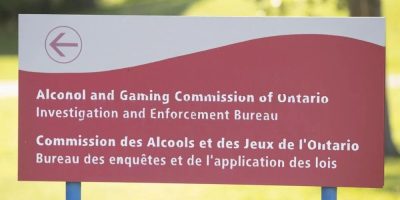
By Allison Jones
he pace of new home construction is picking up in Ontario, though it is still far off the levels needed for the government to achieve its pledge to build 1.5 million homes by 2031, the budget released Tuesday shows.
In last year's budget, projections for housing starts had Ontario building fewer than 80,000 new homes in 2024, but that number is now expected to be nearly 88,000.
Those figures are set to continue rising slowly but steadily over the next few years, up to 95,800 in 2027, according to the projections in the budget based on the average of private sector forecasts.
However, Ontario needs to be building at least 125,000 homes this year, ramping up to at least 175,000 per year to get to 1.5 million homes, since the first few years of the 10-year period also saw below-needed levels.
By the Progressive Conservative government's own count, it actually met 99 per cent of last year's target of building 110,000 homes. However, that is only because they started counting long-term care beds as homes. Nearly 10,000 of those were created last year.
NDP Leader Marit Stiles said the government is using long-term care to artificially inflate its stats.
"The people of Ontario aren't going to fall for that," she said.
"I mean, that's pretty creative on the part of the government, I would say, but ... they're misleading Ontarians, right, into thinking that somehow this housing is getting built fast enough."
Finance Minister Peter Bethlenfalvy acknowledged that housing starts are not where he hoped they would be, but said high interest rates are a large factor in tamping down construction.
"That too shall pass, and what we won't waver on is our commitment to find more ways to get more houses (built)," he said.
The budget contains $1.6 billion in new money for housing-enabling infrastructure. Municipalities will be able to use the funds to build infrastructure such as water lines and roads, something they have said has been lacking, which has been a hurdle to building new housing.
Municipal Affairs and Housing Minister Paul Calandra is expected to soon introduce new housing legislation aimed at boosting supply, though the premier has already adamantly ruled out automatically allowing fourplexes in municipalities across the province.
Premier Doug Ford has railed about buildings of four, six or eight storeys sprouting up in neighbourhoods, though the four-unit fourplexes are not necessarily four storeys.
In order to get more rental housing built, the government is allowing municipalities to offer a reduced municipal property tax rate on new multi-residential rental properties.
The budget says Ontario will let all single- and upper-tier municipalities impose vacant home taxes, which the government says will increase housing supply. Currently, Toronto, Ottawa and Hamilton have the authority to impose such a tax.
Ontario is also spending $155 million to increase a construction funding subsidy for building long-term care homes, which the government said will fast-track the process.
The province is further putting an additional $152 million toward housing to support people facing homelessness and mental-health or addictions challenges.
In the resale market, high interest rates are having a major impact, the budget shows. Resales were 12.3 per cent lower in 2023, following a 31.9-per-cent decline in 2022, reaching the lowest sales volume in more than 20 years, the budget indicates.
The resale market is projected to rebound in 2024, with growth of around four per cent, followed by a 16-per-cent jump in 2025, the government said in the budget.
The average monthly mortgage carrying cost is now about $4,600, well above the previous peak from the 1980s when adjusted for inflation.
Banner image: A new housing development is seen in Belleville, Ont., on Friday, March 1, 2024. THE CANADIAN PRESS/Chris Young
This report by The Canadian Press was first published March 26, 2024.





